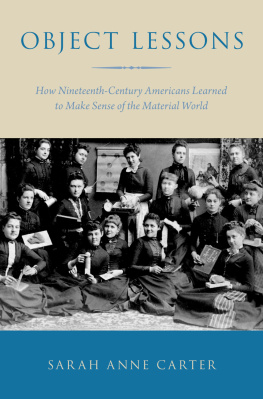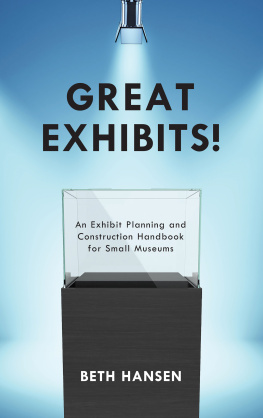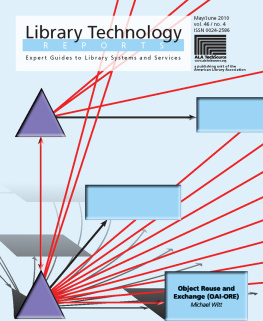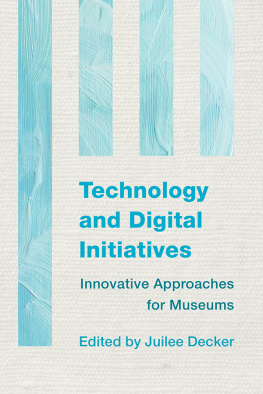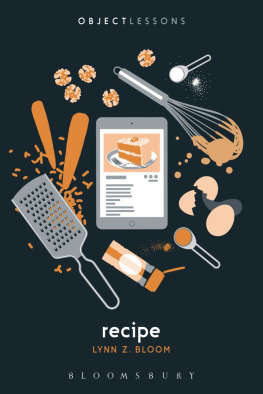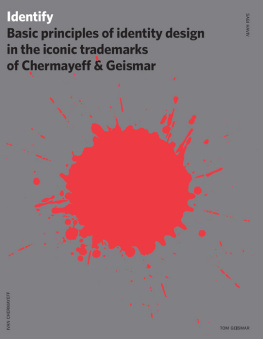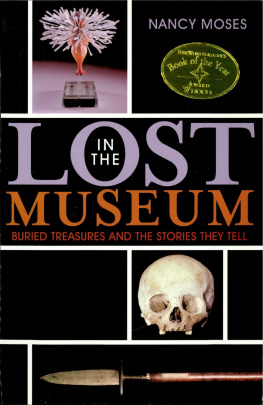Museum Object Lessons for the Digital Age
Museum Object Lessons for the Digital Age
Haidy Geismar
First published in 2018 by
UCL Press
University College London
Gower Street
London WC1E 6BT
Available to download free: www.ucl.ac.uk/ucl-press
Text Haidy Geismar, 2018
Images Copyright holders named in captions, 2018
Haidy Geismar has asserted her right under the Copyright, Designs and Patents Act 1988 to be identified as author of this work.
A CIP catalogue record for this book is available from The British Library.
This book is published under a Creative Commons 4.0 International license (CC BY 4.0). This license allows you to share, copy, distribute and transmit the work; to adapt the work and to make commercial use of the work providing attribution is made to the authors (but not in any way that suggests that they endorse you or your use of the work). Attribution should include the following information:
Geismar, H. 2018. Museum Object Lessons for the Digital Age. London: UCL Press. DOI: https://doi.org/10.14324/111.9781787352810
Further details about Creative Commons licenses are available at http://creativecommons.org/licenses/
ISBN: 9781787352834 (Hbk.)
ISBN: 9781787352827 (Pbk.)
ISBN: 9781787352810 (PDF)
ISBN: 9781787352841 (epub)
ISBN: 9781787352858 (mobi)
ISBN: 9781787352865 (html)
DOI: https://doi.org/10.14324/111.9781787352810
This book is dedicated to the memory of Gillian Conquest.
Acknowledgements
For feedback and friendship at different moments I am grateful to: Bruce Altshuler, Joshua Bell, Clare Harris, Aaron Glass, Hannah Knox, Daniel Miller, Katja Mller, Stephen Neale, Maia Nuku, Laura Peers, Ciraj Rassool, Antonia Walford and two anonymous reviewers for UCL Press. Thanks to Maia Nuku, Caroline Wright, Harriet Loffler, Kura Puke, Stuart Foster, Te Matahiapo Research Organization, Giancarlo Amati, Sebastian Chan, Ludovic Coupaye, Adam Drazin, Susanne Kchler and Delphine Mercier for their collaboration and conversation during the course of research and writing. The research and writing was undertaken since I started in my present position at UCL in 2012. I am grateful for the support of a research fellowship at the Bard Graduate Center in New York, Autumn 2015, and for the ongoing support from the Department of Anthropology at UCL. Special thanks to the Berlin Writers Workshop (with intense gratitude to Jennifer Deger for all the support and feedback).
This work was also refined through opportunities to present and discuss at: Heidelberg University; Halle University Museum 4.0 lecture series; Aarhus Universitys Precious Relics Workshop; the Museum Studies and Anthropology Seminar at Johns Hopkins, Baltimore, USA; the research seminar at Bard Graduate Center, New York; the Austronesian Seminar, LSE; the Museums at the Cross Roads Symposium at the Mathers Museum, Indiana University; the Transforming Data Workshop, CRESC-Open University; the Visual, Material and Museum Anthropology Seminar at the University of Oxford; the London Historical Geographers Seminar, Senate House; and the Centre for Anthropological Research on Museums and Heritage at Humboldt University, Berlin. Thanks to Nora Al-Badri and Jan Nikolai Nelles for their permission to use the image of Nefertiti on the cover.
Thanks to Chris Penfold, Jaimee Biggins and the editorial team at UCL Press.
*Please note: all referenced web pages have been archived through the Wayback Machine and so can be accessed, either live or dead, through https://archive.org/web/.
Contents
List of figures
Introduction
Object Lesson: An example from real life that teaches a lesson or explains something.
This book explores the interface of digital and analogue media within museum practices and technologies of exhibition, classification, archiving and collection. It is an invitation to think about digital in historical and material context, and to meditate upon how collections are made, and remade, over and over again. The term object lesson means more than simply using artefacts for teaching purposes. Rather, object lessons are arguments about the world made through things. They are educational, performative and fundamentally material. As Lorraine Daston describes, object lessons are ideas brought into being by things, not just as communicating vehicles, but as sites of meaning animated by their materiality.
Museums are the perfect sites for the production and dissemination of object lessons. They are curated spaces, often curiously set apart from our everyday lives, in which we, the public, are invited to learn very particular things about the world. The neo-classical sculpture hall, the white cube contemporary art space and the reconstructed period room have become sites of learning within which visitors may lose themselves in the text of labels and display panels, the narratives of audio guides and guided tours. The power of these spaces is evident in the global surge of museum-building projects: nation-states, corporations and local communities are investing more and more in spaces to collect, curate and exhibit their histories, narratives and identities. Object lessons are therefore both ontological (they tell us something about what there is) and epistemological (they help us interpret and explain what there is).

And yet, the relationships between collections and displays in museums, and notions of real life have to be carefully constructed within the period rooms of decorative arts museums, the halls of Africa, Oceania and the Americas, in stores and archives, in the community curated As I will show here, as much as digital media brings new ways of looking at and understanding collections, it also re-presents, and refracts, earlier representational techniques. Holograms, virtual reality and interactive touch screens continue the reality effects, and object lessons, of model-making, dioramas and period rooms. These are all technologies that purport to capture the outside world and bring it into the space of the museum, and they all also produce new ways of being in, and learning about, the world.
It is quite common to imagine the digital as immaterial as a set of experiences or form of information sequestered somewhere in the cloud. To counter this there is a vibrant emerging literature focused on the material infrastructures that underpin digital networks and which enable digital media to circulate and pulsate its way around the world from the electrical grid to server farms and undersea cables.together into many different forms. In fact, as I shall present here, imagining the digital/analogue as a divide (rather than a continuum) is not a particularly productive way of understanding the particular materiality, and historicity, of digital practices and objects in museums.
Many people understand digital technologies particularly those that produce the expansive internet, sometimes referred to as Web 2.0 or more recently as the semantic web as extending the civic capacities of museums, opening access, democratising curatorial authority and destabilising values of authenticity and the aura of singular artefacts. The digital components of contemporary museum practices are often presented as radical alternatives to the historical form of the museum itself, provoking a powerful sense of undoing the heavy stasis of the museum artefact with a new kind of materiality, a digital poetics that can be used to unpack the politics of museum collections. This, I believe, is only half the story. In this series of chapters, each taking a single object as a starting point, I work to make sense of digital collections as objects in their own right, and locate them within the object lessons that predate the ubiquity of digital technologies within our cultural lives. In so doing I undo many of our assumptions about the nature of the digital. This is not a reactionary argument against the new, or against the digital, but rather an exhortation to take the digital seriously in more than just its own terms to unpack the assumptions and perspectives that are built into digital museum projects.





